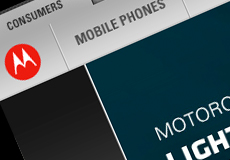By
Rob ScottSeptember 6, 2013
During this week’s IFA 2013 in Berlin, Philips TV 3.0 was unveiled, including a number of cloud-related services intended to change the viewing habits of Philips’ Smart TV owners. The company is launching a new Cloud TV app, an over-the-top service that provides access to hundreds of TV channels which can be sorted by genre, favorites and themes. Philips also unveiled the new Cloud Explorer app for storage of personal media such as videos, music and pictures. Continue reading IFA 2013: Philips Launches Cloud TV and Explorer Storage Apps
By
Rob ScottSeptember 2, 2013
As a standalone app for iOS and Android, Peel has been working toward becoming the next-generation TV remote control. The second screen remote control app allows users to discover and access TV shows and movies from their tablets and phones. Due largely to recent partnerships with mobile device manufacturers, Peel has been gaining momentum, growing from 1 million registered users in Q1 of 2012 to nearly 26 million registered users today. Continue reading Tune-In: Peel Wants to Become the World’s Next-Gen TV Remote
By
Valerie SavranSeptember 2, 2013
Premium cable network Showtime has begun syncing interactive elements for its shows directly onto LG’s smart TVs using Web-based technology. This service is unique in that there are no extraneous downloads or devices. Although not all Showtime viewers own the compatible technology for interactive TV, this will likely change in the future as more TV manufacturers adopt the standard HTML5 and JavaScript technologies used by LG’s LivePlus service. Continue reading Showtime Network Syncing Interactive Content on LG Smart TVs
By
Chris CastanedaAugust 5, 2013
Netflix has started a quiet effort to address problems with smart TVs. The company is in talks with tech companies and consumer electronics manufacturers in order to find improvements to user interfaces, remote controls and other smart TV components. The idea of Internet content combined with TVs began in the mid 1990s, but some believe progress has been slow. New apps, services and compelling content are needed to engage viewers to purchase and use smart TVs. Continue reading Netflix Hopes to Bring Increased Intelligence to Smart TVs
By
emeadowsApril 11, 2013
Akamai is aiming to get the second screen experience right. It demonstrated its Hyperconnected Living Room concept at NAB in Las Vegas, showcasing a dual-screen experience that pushes out on-demand movies and other streaming content to a user’s slate right when they would expect to see it. It is a contrast to other such services that tend to lag and provide content later than desired. Continue reading NAB 2013: Akamai Demos Hyperconnected Living Room
By
emeadowsApril 11, 2013
According to Ad Age, the Intel Media TV Service has all the components that consumers want. The interface is beautiful, the remote is simple and the cloud-based DVR doesn’t require anyone to hit “record.” Algorithms are built in to learn what users like and recommend new content, it syncs easily with social networks, there is effortless co-viewing with distant friends, it works on mobile devices and more. Continue reading Intel Stands to Reinvent Cable TV with Media TV Service
By
ETCentricJanuary 8, 2013
Google’s new “send to TV” feature is starting to pop up on a collection of new TVs and devices from companies like Sony, LG, Panasonic and Bang & Olufsen. The feature turns a consumer’s Android device into a YouTube remote for the big screen, and also allows users to push videos from devices to Google-equipped TVs. These YouTube-friendly sets will premiere at CES this week. Continue reading CES 2013: Android Devices Are Now YouTube Remotes for TVs

